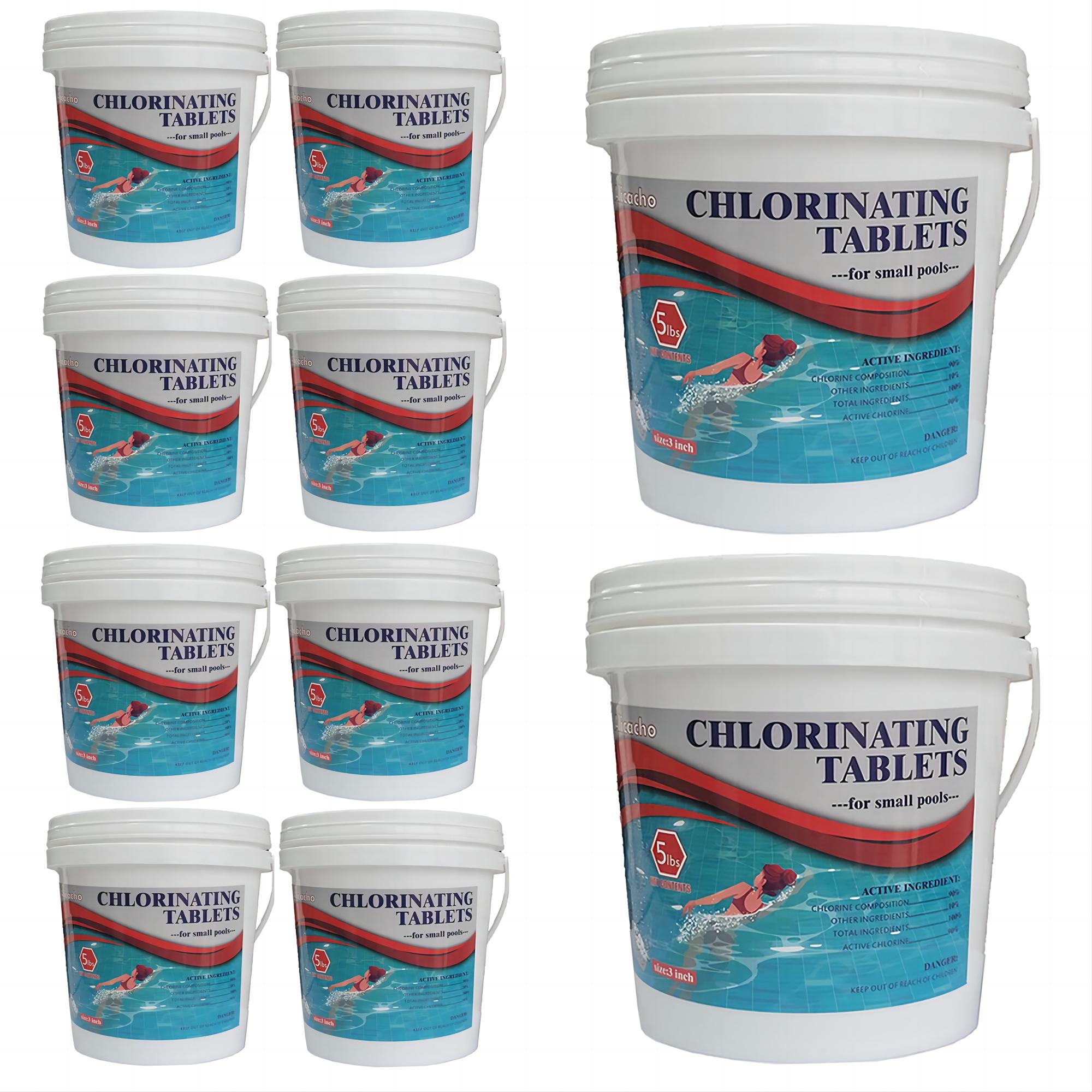To ensure that your pool water is healthy and suitable for swimming, it is best that you learn how to get rid of combined chlorine. This will ensure that bathers will have a very comfortable summer swimming around the perimeter of your healthy pool water.
Once levels of combined chlorine are too high, immediate actions should be executed to be able to lower it, it is also a clear indication of the struggle of your pool to fight the pollution that can be brought by your bathers and other chemicals or detergents that are introduced with your pool. This also means that your pool is not in a condition where bathers will enjoy it as chlorinous irritants can present in the pool water, which may harm swimmers.
In this article, we will discuss why you should get rid of combined chlorine. And discuss how to get rid of combined chlorine helping pool owners cope and come up with a solution as soon as possible.

Part 1. Why Combined Chlorine Should Be Lowered?
Before we get to the detailed description of the procedures about how to get rid of combined chlorine in pools, it is a must to understand the reasons why it must be lowered. As a pool owner it is important to understand that when there is a lesser amount of combined chlorine in our pool, the quality of water and air will be better. Once there is too much combined chlorine, everyone can have an uncomfortable feeling, not a good swimming experience, and even health issues as time goes by. Once there are high levels of combined chlorine, it can lead to:
- The bathing suits of swimmers can be damaged.
- You can smell an unfamiliar odor which is that of a pool chemical odor which can be unpleasant when ingested.
- Swimmers can have burning red eyes.
- If there is too much-combined chlorine, your skin can be itchy, dry, and irritated. There is also a huge possibility that you will get rashes.
- Your hair will be brittle.
- The worst effect is to have illnesses that concern your respiratory health. Some of the possible issues that you can get are:
- Asthma
- Allergies (in any part of your body including your face)
- You can have a persistent cough which is termed the Chlorine Cough.
- Bronchitis
- You can also have a lifeguard lung.
So, as a pool owner, you must have ideas how to get rid of combined chlorine in your pools. This is to avoid having and experiencing any of the above-mentioned possible effects when there are high chlorine levels. By making your pool look healthy on the inside and outside, you are also ensuring the trust of your people, and you can also provide a nice place where anyone can enjoy it without worrying about any dilemma on combined chlorine.
Part 2. Getting To Know Combined Chlorine Better
Although we already have an idea of the effects of high combined chlorine in pools, it is time that we get to familiarize ourselves with it. When you are starting to smell a heavy pool or chlorine smell, or your skin is getting irritated or itchy, you might want to check the level of combined chlorine that your pool has. It is not chlorine that made this, it is because of the formation of chloramines or combined chlorine.
Once the chlorine that you put into your pool starts interacting with different organic materials from bathers like lotion, perfume, hair products, sweat, and a lot more, combined chlorine can be formed as well as other by-products of disinfection. It must be understood that the bodies of bathers are carrying the said organic matters along with them everywhere they go. Once a bather jumps into the pool carrying all these organic matters, these will bind into chlorine and will start creating combined chlorine that is harmful.
Before starting to understand the procedures about how to get rid of combined chlorine in pools, combined chlorine must be measured properly. As a pool owner, you have to know that there are three types of chlorine, these are free chlorine, combined chlorine, and total chlorine. To determine the right amount of combined chlorine present in your pools, you have to follow the formula wherein you need to subtract the level of free chlorine from the total chlorine. Once the level of combined chlorine is determined, then we can now proceed to the execution of how to get rid of combined chlorine in pools in the next part of the article.
Part 3. How Do You Get Rid Of Combined Chlorine In Pools?
And we finally understand how to get rid of combined chlorine in pools by following or trying to execute the different procedures, below.
1. Your Pool Must be Super Chlorinated.
If you own a commercial pool, you are probably expecting high loads of bathers. To keep up with the possibly increasing number of them, there is a need to super chlorinate your pool water addressing the levels of combined chlorine. You need to put chlorine in the pool and it needs to be 10 times the amount of the basic amount that you are putting on it, this process is called super chlorination. You have to know that it will take 25 parts of combined chlorine to be able to execute the work of the one part of the free chlorine that your pool has. This is why you must calculate the right amount of combined chlorine in your pool, you can use it as your basis in the process of super chlorination.
2. You can apply a non-chlorine shock.
The act of adding more oxidizer to your pool water which is not in the chlorine form is referred to as non-chlorine shocking. One of the most common oxidizers that you can use is the MPS or the potassium monopersulfate. This helps oxidants however it does not help with the process of disinfection. You can also use enzymes since they can be used to metabolize organic materials, those that usually come from bathers like shampoo, lotion, and a lot more. But, you have to take note that enzymes will not be of aid in reducing the level of combined chlorine, on the other hand, they will help you increase the effectiveness of chlorine that you still have in your pool.
3. You can also Use Secondary Sanitation.
There are also alternative solutions like adding supplemental and secondary pool sanitation systems to the existing disinfection method, which are usually bromine or chlorine. These secondary and supplemental sanitation can be able to do what chlorine and bromine can’t which is to lessen the combined chlorine and protect your pool water from microorganisms that are said to be chlorine resistant.
These are only some of the solutions that you can start executing so that you can get rid of high combined chlorine levels in your pools. It is always advisable to ask the help of pool experts once the situation cannot be controlled anymore. It is best to always remember that having too much-combined chlorine in your pools will pose a hazard to your pool, and most especially to the bathers!
Part 4. FAQs
1. What is the Recommended Level of Combined Chlorine in Pools?
Ideally, the combined chlorine residual must be zero. Or it must not be more than half of the level of free chlorine residual that you have in your pool. Once you have a combined chlorine level that is above 1 mg/l, you should conduct follow-up testing to be able to identify the value of the concentration of dichloramines and monochloramines.

2. Can You Swim in a Pool with High Combined Chlorine?
Any swimmer should not present himself in the pool water when there are high levels of combined chlorine. If combined chlorine is higher than 0.5 ppm you should shock the pool. It is needed that free chlorine level must drop to 5 ppm or less before swimming in it. You can add pool shock to your pool water, the most common is every 10,000 gallons to add 1 or 2 pounds in pool water.
3. Will Sunlight Reduce Combined Chlorine?
As we all know, when there is sunlight, the effectiveness of chlorine diminishes. Its rays break down chlorine, which is then released into the atmosphere. When it is summer, the sun will just need two hours to be able to break down 90% of the chlorine level that is present in your pool.




